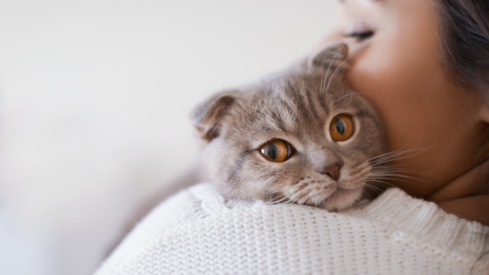Cat market opportunities in the US

Historically speaking, the US pet industry has been overtly canine-centric, and not without commercial justification.
Why the focus on dogs?
In contrast to continental European countries, dogs still significantly outnumber cats in the US. Dog ownership rates – but not necessarily other pet ownership rates – have been increasing since the Great Recession of 2007-2009.
Dogs also tend to be more lucrative in terms of products and services: veterinary as well as nonmedical services such as grooming, boarding and training. As a result, pet product manufacturers, retailers and marketers have tended to give less attention to cats – and their owners have noticed!
When asked whether cats, compared with dogs, are ‘sometimes treated as second-class,’ cat owners said ‘yes’. They felt this was especially true for general retailers that sell pet products, with 51% strongly or somewhat agreeing.
Wrong ideas about cats
Common misconceptions in the US about cats are that they are less affectionate than dogs, or ‘for women’. Cat owners clearly do not see cats as second-best. In a Packaged Facts survey last February, cat owners equalled dog owners as ‘pet parents’, with 95-96% of cat or dog owners strongly or somewhat agreeing that their pets are ‘part of the family’.
Impact on human health
As with dog owners, a large majority of US cat owners believe that their feline friends have a beneficial impact on their own physical and emotional health: 87% of cat owners, in line with the 88% rate among dog owners. Reflecting the impacts of COVID-19, strong agreement that cats and dogs are important to mental health rose from 52% to 59% for cats, and from 54% to 60% for dogs, between the Packaged Facts surveys of February/March 2020 and February 2021.
Change is coming
To the credit of many pet industry participants, treatment of cats as an afterthought is beginning to change. Retailers, marketers, product developers and investors are paying noticeably more attention to cats now.
Even so, opportunities abound for market development, some of which reflect the industry’s ingrained tendency to focus on dogs. An example of this is the lag on the cat side during the grain-free pet food boom a few years back. A current parallel is the lag in fresh pet food offerings.
Size of the cat market
Cats represent 30% (or $13.1 billion) of pet food sector sales, compared with a 31% share of non-food pet supply sales and a 28% share of veterinary sector revenues.
Post-pandemic pets
There are significant opportunities presented by COVID-19. This includes the ‘pandemic pet’ population boom, and people spending more time at home, whether they are working, learning, socialising or relaxing. There is also the heightened COVID-19 era focus on health and wellness, including immunity, which is being transferred onto family pets too.
While not restricted to cats, these trends can represent specific and, sometimes, greater opportunities for market advancement, given the relative underdevelopment of the feline segment. More and better products and services for cats, together with additional marketing and media attention, will encourage cat owners to invest more heavily in the health and well-being of their pets, and attract a growing share of pet owners into the feline fold.
